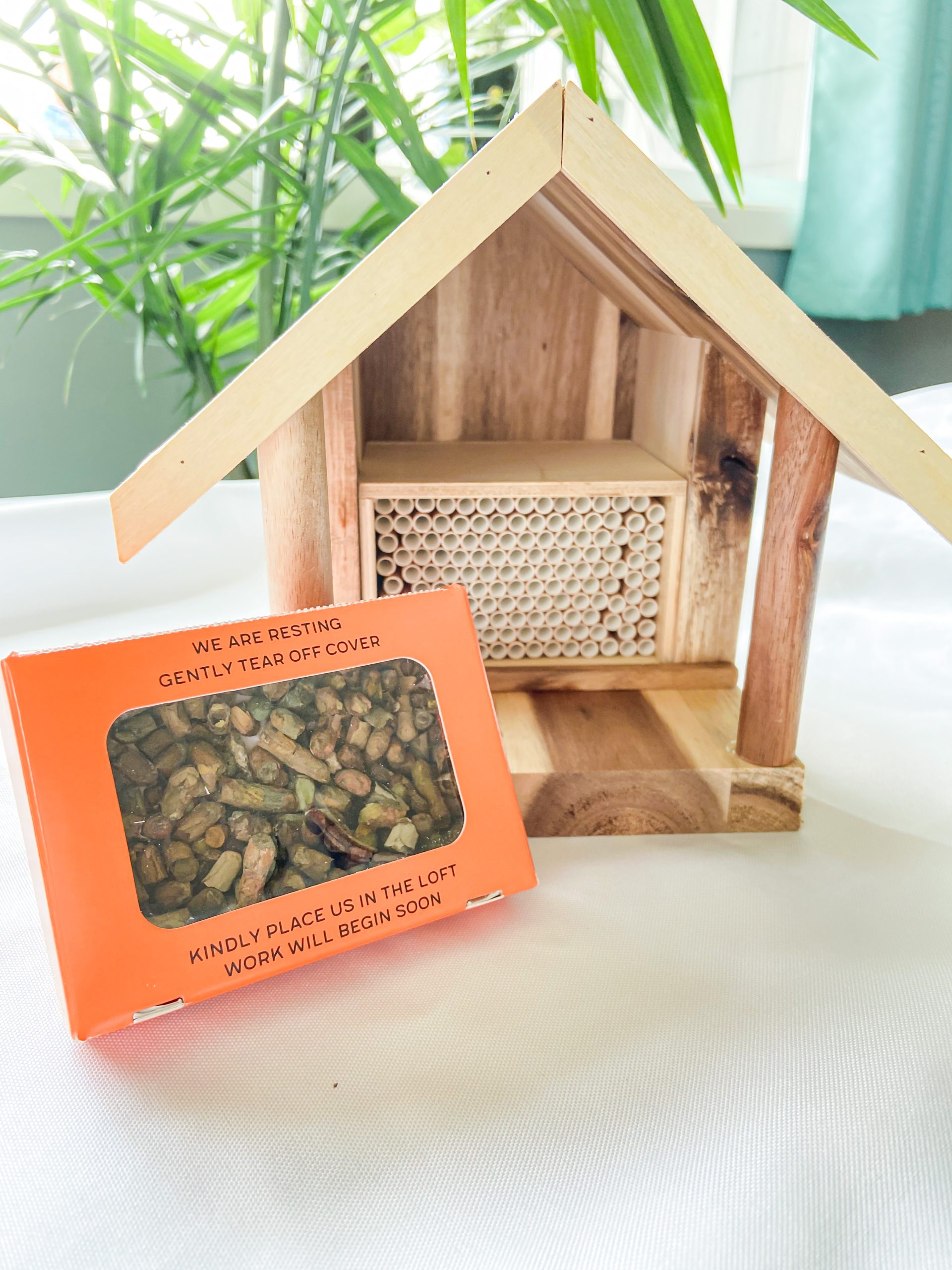If you have purchased leafcutter bees from our shop, it is important to know how to properly care for their nesting tubes. At Kind Bee Farms, we make looking after leafcutter nests a breeze, thanks to our comprehensive Bee House kits.
Below, we’ll discuss how leafcutter bees nest and how you can care for their nesting tubes during the winter and before the new growth season. Keep reading to learn more!
How Do Leafcutter Bees Nest?
Unlike honey bees, who live and work in hives, leafcutter bees nest alone! In the wild, they make their homes in little wood and stem hollows and build little beds called nesting tubes. They build these nests with cut leaves from nearby plants, which they wrap around their eggs to protect them during incubation. Once leafcutter bees fertilize their eggs, the growing bees will spend up to 23 days in their cocoons before they hatch.
At Kind Bee Farms, our Bee Boxes contain leafcutters on the 18th to 20th day of their growth cycle. This means that they are almost ready to hatch! When your bees arrive, set up your Bee House in the garden and place the orange bee box on the inside shelf. On day 23 of their cycle, the bees will be fully hatched and ready to work in your garden. Before you know it, they will lay their own cocoons in the nesting tubes provided.
How to Care for Leafcutter Bee Tubes
Kind Bee Farm nesting tubes are made from a soft, paperlike material that doesn’t poke or scratch leafcutter bees like more common bamboo tubes when they fly in and out. As well, leafcutter bees are very independent and can look after themselves—but you can give them a helping hand by keeping their nesting tubes safe both during and after the summer growth season.
Follow the methods below to care for your leafcutter nests:
End-of-Season Care
Once the growing season ends, it is time to put your Bee House into storage. Do not move the nesting tubes around. These nests will contain cocoons with growing baby leafcutters that have been safely wrapped by their mothers. If left undisturbed, they will stay dormant during the winter until the next growth season begins.
To keep the nests safe, choose a cool, dry place to store your house (just above freezing temperatures), such as a shelf in your unheated shed or garage. Make sure to keep the nests away from any heat sources, or the bees will incubate and hatch prematurely.
We recommend keeping the box your Bee House was shipped in as a storage solution, as it will provide easy protection from moisture and other potential damage.
New Season Care
Once outdoor temperatures warm up during the following spring and/or summer, it’s time to bring out the nesting tubes and warm them up! After temperatures reach 20 C (or 70 F), you can remove your Bee House from its cold storage space, install it outside in its original spot with the previous year’s nesting tubes inside, and allow the bees to hatch naturally.
Generally, leafcutter bees will lay 1/3 female eggs and 2/3 male eggs. Female bees are pollinators, so we recommend purchasing our bee replacement kit each year to repopulate the female bees! Our replacement kit comes with extra nesting tubes to give your new set of bees a place to rest and lay more eggs. We recommend ordering replacements once temperatures have reached 20 C and your flowers are already in bloom for the bees to feed on!
Get Leafcutter Bee Tubes from Kind Bee Farms!
Order our replacement bee kit and receive a box of ready-to-work bees and extra nesting tubes.
Visit our Shop today to order your bees and see your garden come to life!

